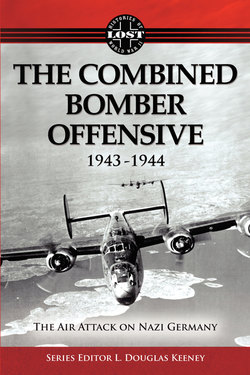Читать книгу The Combined Bomber Offensive 1943 - 1944: The Air Attack on Nazi Germany - L. Douglas Keeney - Страница 5
На сайте Литреса книга снята с продажи.
THE CASABLANCA CONFERENCE
ОглавлениеFrom the above it seems quite evident that definite progress had been made in the sphere of target selection in the planning prior to the drawing of the final blueprint for the combined bomber offensive in 1943. It was true, nevertheless, that certain things were lacking in the preparations for the air offensive against the Western Axis. No directive emanating from the top policy levels had been issued to control the combined operations of the two Allied air forces that were operating against Germany; no directive of sufficient clearness and definiteness and been given to the U.S. Eighth Air Force; and no unified analysis of enemy economy had been made that was sufficiently thorough to serve as a basis for the best target selection.
Two of these defects in strategic planning were eliminated by the work of the Casablanca Conference in January 1943: a directive was issued by the Combined Chiefs of Staff, and this directive proved to be quite clear and definite. There had apparently never been any disposition on the part of the Combined Chiefs to depart from the intention to use strategic air power as one of the primary offensive measures against Germany, but there had been some pressure exerted to have the U. S. Eighth abandon daylight precision bombing and join with the British in night bombing.
The Commanding General of the Eighth was called to Casablanca and given opportunity to defend the United States doctrine of day bombing. His defense emphasized the greater accuracy of this type of operation which permitted small targets like factories to be found, seen, and hit. Day bombing, he declared, was more economical in the employment of forces, for a smaller number of bombers could destroy a given target. This meant reduced exposure to enemy action and consequent lower losses for a given result. Also, day attack was more economical because all forces could carry bombs, whereas at night large numbers of pathfinders and target illuminators were required. It was stated, in addition, that day bombing used in conjunction with British night bombing would heavily tax German defenses by allowing no rest during the daylight hours, and would prevent congestion and provide more economical use of English airdromes. The general’s defense of precision bombing likewise stressed the fact that American training and equipment would require modification if successful night operation was to be possible, for American crews would need a long period of additional training to make them capable of coping with English weather at night and U.S. planes would have to be flame dampened, thus reducing their power and range. Furthermore, the point was made that day bombing provided an excellent means of cooperating with the RAF night effort, in that the AAF bombers could find difficult targets and mark them by setting fires, whereupon the RAF could complete the job of destruction at night. Moreover, day bombing would permit the destruction of the enemy’s day fighters, thus causing the greatest reduction of his air force. Finally, it would (as a complement to night bombing) result in the greatest havoc to the enemy’s industrial system.
General Eaker spent an hour with the British Prime Minister at Casablanca and was assured by the latter that he would be given an opportunity to prove his case.
The Casablanca directive that was issued by the Combined Chiefs of Staff on 21 January 1845 is noteworthy because it governed the operations of both U.S. and British bomber commands in the United Kingdom, because of its excellent statement of the mission of strategic bombardment, and because of the target systems that were selected for attack.
The mission of the bomber offensive from the United Kingdom was “the progressive destruction and dislocation of the German military, industrial and economic system, and the undermining of the morale of the German people to the point where their capacity for armed resistance is fatally weakened.”
The target systems to be attacked in the accomplishment of this mission were in five categories in the following order of priority:
1 German submarine construction yards
2 The German aircraft industry
3 Transportation
4 Oil plants
5 Other targets in enemy war industry
The directive stated that strategical developments might vary the order of the five categories and that there were other targets of military and political importance, such as submarine operating based on the Biscay coast and the city of Berlin, which were worthy of attention. Attacks were to be made in the Mediterranean theater when the occasion demanded, and the units of the German fleet were to be hit when opportune. Daylight attacks were to be pressed against targets within Germany in order to maintain continuous pressure on German fighters, and to take enemy fighter pressure away from the Soviet and Mediterranean theaters.
